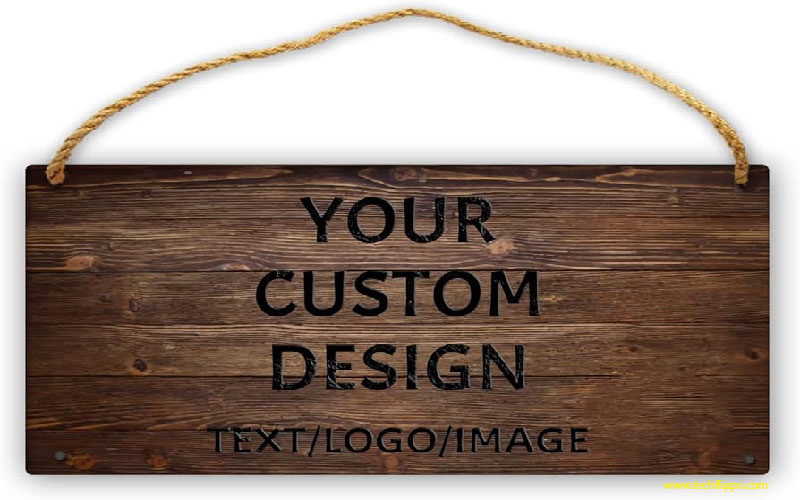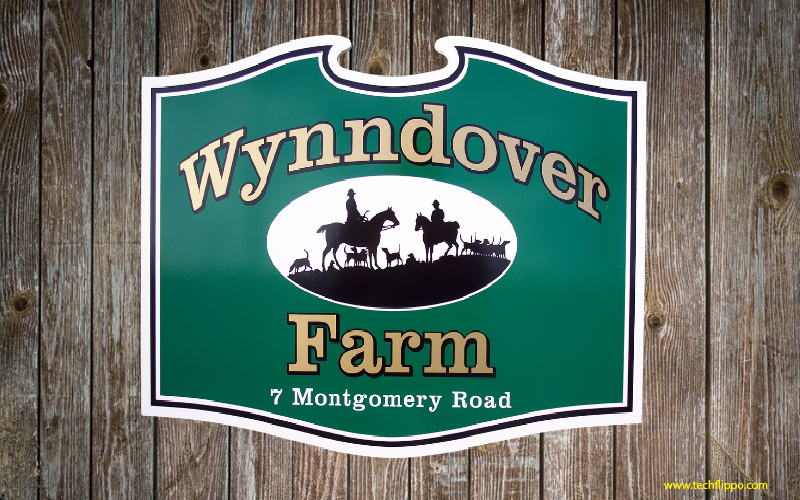How to Design the Perfect Custom Sign
Custom signs are more than just pieces of information; they are powerful tools that communicate your brand’s identity and values. Whether you’re a business owner looking to attract customers or an event planner aiming for a memorable experience, the right sign can make all the difference. Imagine walking past a vibrant, creatively designed sign that stops you in your tracks—this is the impact of effective signage. It’s not just about what you say but how you say it. In this guide, we’ll explore how to design the perfect custom sign that resonates with your audience and leaves a lasting impression. Let’s dive into the essentials of creating signage that stands out!

Understanding the purpose and audience of your sign
Before diving into design, clarify the purpose of your custom sign. Is it to inform, advertise, or guide? Each function shapes its style and content.
Next, identify your target audience. Understanding who will see the sign influences everything from language choice to imagery. Are they potential customers passing by? Or perhaps attendees at an event?
Consider their demographics too—age, interests, and preferences all play a role in how they perceive visual information. A vibrant design may attract younger viewers while something minimalist might appeal more to professionals.
Think about where your audience encounters the sign as well. Will it be in a busy street or inside a quiet office? Tailoring these elements ensures that your message resonates effectively with those intended to receive it.
Choosing the right material for your custom sign
Selecting the right material for your custom sign is crucial. It influences both durability and visibility. Common choices include wood, metal, acrylic, and vinyl.
Wood offers a classic look but may not withstand harsh weather conditions long-term. Metal signs are sturdy and can handle outdoor elements. They also provide a sleek finish that conveys professionalism.
Acrylic serves as a lightweight alternative with vibrant color options. It’s perfect for indoor settings or protected outdoor areas where aesthetics matter most. Vinyl is versatile and cost-effective, ideal for temporary signage or events.
Consider the environment where your sign will be displayed. Factors like sunlight exposure, moisture levels, and wind strength play vital roles in material selection. Choosing wisely ensures longevity while effectively communicating your message to passersby.
Importance of font and color selection
Choosing the right font and color for your custom sign is crucial. These elements communicate your message instantly.
Fonts convey personality. A playful script might attract a younger audience, while a bold sans-serif denotes professionalism. Think about who you want to reach and tailor your choices accordingly.
Color plays an equally vital role. Bright colors grab attention but can be overwhelming if overused. On the other hand, muted tones may blend in but offer elegance and sophistication.
Contrast is key as well—ensure text stands out against the background for easy readability. This makes it easier for passersby to grasp information quickly.
Remember also that colors evoke emotions; warm hues inspire energy, while cool tones create calmness. Choose wisely to align with what you wish to express through your sign’s design.
Incorporating branding elements into the design
Incorporating branding elements into your custom sign is essential for creating a cohesive identity. Your sign should reflect the essence of your business. This includes using logos, taglines, and consistent color schemes.
Start with your logo. It’s often the first thing people notice. Place it prominently on the sign to enhance brand recognition.
Color selection plays a crucial role too. Use colors that align with your brand palette to evoke specific emotions or associations.
Don’t forget typography! Choose fonts that complement your brand’s personality while ensuring readability from a distance.
If applicable, include social media handles or a website link to connect with potential customers beyond just their visit.
These branding elements transform an ordinary sign into a powerful marketing tool, reinforcing who you are as a business and making you memorable in the minds of consumers.
Using eye-catching graphics and images
Graphics and images play a pivotal role in the effectiveness of your custom sign. They can draw attention, communicate messages quickly, and enhance visual appeal.
Choosing vibrant colors and striking visuals can capture the eyes of passersby almost instantly. Think about what resonates with your target audience. A playful image might suit a children’s store, while sleek graphics could fit a tech business better.
Incorporating relevant imagery not only enhances aesthetics but also reinforces your message. For instance, using icons or symbols related to your industry can provide immediate context.
Don’t be afraid to think outside the box! Unique designs often create memorable impressions that linger long after someone has walked by. Just ensure that every graphic aligns with your brand identity for coherence across all platforms. This consistency strengthens recognition over time, making it easier for customers to remember you when they need services or products you offer.

Tips for effective placement and installation of custom signs
Placement and installation of custom signs can significantly impact their effectiveness. Start by considering visibility. Your sign should be easily seen from various angles, especially at a distance.
Height matters too. Install your sign at eye level for the best engagement. This ensures that passersby can read it without straining their necks.
Consider lighting conditions as well. A well-lit area enhances readability, particularly during evening hours or in low-light situations.
Think about surrounding elements like trees or buildings that could obstruct the view. Ensure nothing interferes with your message’s clarity.
Secure your sign properly to withstand weather changes and prevent damage over time. Reinforced mounting techniques will keep it stable against wind or heavy rain, allowing it to serve its purpose effectively for years to come.
The benefits of investing in a professional designer
Investing in a professional designer for your custom sign can be a game-changer. Their expertise ensures that every element of the sign is carefully considered, from layout to color schemes.
A skilled designer understands how to balance aesthetics with functionality. They know which fonts are readable from a distance and how colors evoke emotions. This knowledge enhances the overall impact of your message.
Moreover, they stay updated on design trends and technologies. This means your sign will not only look modern but also stand out in today’s competitive market.
Professional designers have access to quality materials and printing techniques that may not be available to DIYers. The final product often reflects higher standards, elevating your brand’s image significantly.
Additionally, working with an expert saves time and reduces stress. You can focus on other business aspects while trusting someone else to bring your vision to life effectively.
Case studies and examples of successful custom signs
One standout example is a boutique coffee shop that transformed its identity with a custom sign. The owners opted for a vintage-style neon sign, which not only attracted foot traffic but also became an Instagram hotspot. Customers loved sharing photos of it, boosting the café’s visibility online.
Another inspiring case comes from a local gym that integrated motivational quotes into their signage. The bold colors and dynamic fonts energized members and created a community feel. This clever approach kept people engaged and inspired them to return regularly.
Consider the success of an outdoor adventure company that used large wooden signs at trailheads. With clear navigation graphics and vibrant images of nature, they enhanced visitor experience while promoting their services effectively. These thoughtful designs helped establish trust with clients seeking outdoor adventures.
Conclusion: Creating a memorable and effective custom sign
Creating a memorable and effective custom sign involves careful consideration of several key factors. First, understanding your purpose and audience is essential. This foundation helps to inform every aspect of your design, ensuring it resonates with the people who will see it.
Selecting the right materials can affect both durability and aesthetic appeal. Different environments may call for different solutions—metal for longevity or wood for warmth, for example. Each choice enhances how your sign communicates its message.
Font and color selection play crucial roles in grabbing attention while maintaining readability. The right combination can evoke emotions that align with your brand identity.
Incorporating branding elements solidifies recognition among potential customers. Consistency in logos, colors, and design styles creates familiarity and trust over time.
Eye-catching graphics elevate a simple sign into an engaging visual experience that attracts more eyes than text alone ever could. Using images wisely ensures they add value rather than distract from the primary message.
Placement is equally important; positioning your sign where it’s easily visible amplifies its effectiveness significantly. Think about traffic flow—both pedestrian and vehicular—as you determine optimal locations.
Investing in a professional designer can be a game-changer as well—they bring expertise that elevates ordinary designs to extraordinary levels by blending creativity with practicality seamlessly.
As you explore case studies showcasing successful custom signs, draw inspiration while tailoring ideas to fit your unique vision. Each success story offers valuable insights worth considering as you embark on crafting something exceptional yourself.
A well-designed custom sign does more than convey information; it tells a story about who you are as a business or organization without uttering a single word.